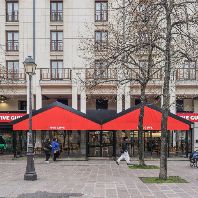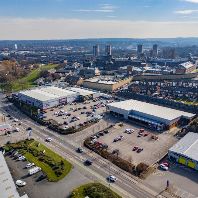Continued interest in defensive retail assets and the completion of some prime transactions in Central and Eastern Europe (CEE) resulted in the region's 2010 retail investment turnover reaching 1.8 billion, twice the level registered in 2009 according to the latest report by CB Richard Ellis (CBRE).
Poland was not only the most liquid market last year, but was also one of the few with strong cross-border investor support. In most other markets, especially in Eastern Europe (EE), local buyers and non-institutional purchasers have become more important. Overall, the level of distress during 2010 steadily increased and the expectation is that this trend will continue in 2011.
Most of Central Europe's economies have recovered from recession and are posting growth above the EU-15 average. However, some are still struggling and, despite the fact that positive economic growth is expected in 2011, most of SEE will probably need another year to recover from the crisis. With the exception of Poland, retail sales growth remained weak in the majority of CEE, underperforming the euro zone average. Retailers however, became more optimistic towards the end of 2010, and a growing number of international brands are reconsidering expansion strategies after a steep fall in activity in recent years. Retailer demand has been focused on the large CEE countries with Poland and Romania attracting over a dozen newcomers in 2010.
Looking ahead, Poland will remain the key destination for most retailers followed by other core CEE markets such as the Czech Republic, Russia and Hungary and this demand is expected to be led by mid-range and value retailer brands.
On the supply side, modern shopping center stock in CEE (excluding EE) increased by 1.6 million m² from the end of 2009, but the level of annual completions in 2010 was down by 20% year-on-year. The only exception to this trend was Bulgaria, where retail stock increased significantly in 2010 as a result of differences in the timing of the development pipeline. Looking ahead, the level of new shopping center deliveries in CEE in 2011 (excluding EE) is set to reach a similar level as in 2010. New developments have started mainly in Poland and Slovakia on the back of strong and/or improved economic fundamentals.
Rental growth in CEE is diverging based on countries' economic and property market performance. Base rents in Poland have remained stable, despite strong economic growth.
"It is expected that continued economic growth, combined with a strengthening Polish Zloty may start having a positive influence on base rents as well as increasing turnover levels," says Jos Tromp, Head of CEE Research and Consulting, CBRE.
Year-on-year prime capital values turned positive again across CEE, with the exception of SEE markets, as these are still seeing falling rental values negatively impacting on capital values. Properties in EE cities have seen the strongest gain in value over the last year but are still down by a third compared to the levels achieved three years ago.
"Despite some improvement across the region, overall liquidity in the SC segment has remained low," added Tromp. "In markets such as Romania, some distressed transactions among investors and developers resulted in an increase in properties sold. In many countries, however, the fact that most prime properties are in the hands of specialized retail investors has resulted in lower trading volumes. This situation is likely to persist as long as secondary retail markets do not show improved performance."
Source: CB Richard Ellis














